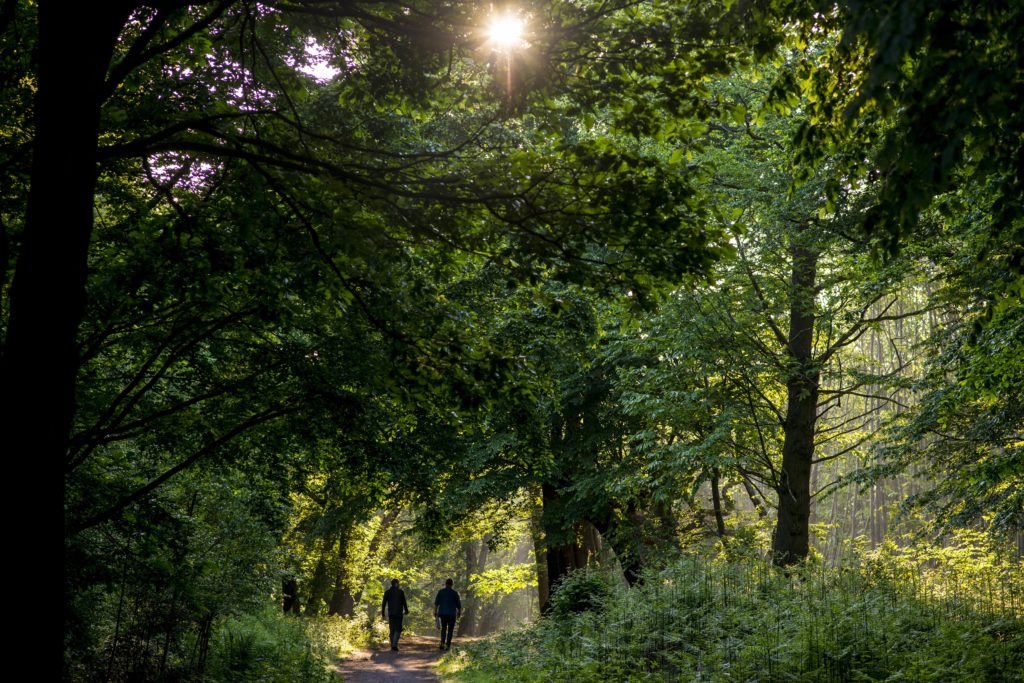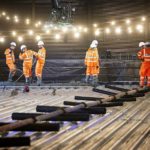News - Construction News
Greener infrastructure

Greener infrastructure will require a sea change in design and procurement, says Keith Bowers, Engineering Director at COWI in the UK.
Booming infrastructure development across the globe now poses a major risk to biodiversity and climate targets because of procurement, planning and designs that frequently sacrifice the environment for other perceived benefits from cost to efficiency. Global construction output is set to soar to $4.5 trillion by 2030 at a time when research shows unsustainable development practices are rapidly depleting biodiversity and contributing to climate change. Failure to consistently prioritise the environment in everything from design constraints to project management metrics and procurement policies results in patchy, piecemeal efforts at mitigating environmental harms from construction.
Sustainable development is disincentivised by short-sighted planning or procurement criteria and project management metrics which elevate considerations such as cost or efficiency above sustainability. With infrastructure at the forefront of global efforts to rebuild from the pandemic, we urgently need more holistic development, designed for environmental as well as social and economic benefits.
Booming development threatens the environment
Global infrastructure development is thriving due to post-pandemic stimulus spending, rising populations, urbanisation in emerging markets and inward immigration to the developed world. Construction output will surge 42% by 2030 and infrastructure will be the fastest growth sector. In the US, the Infrastructure Investment and Jobs Act (IIJA) will see major expansions of everything from road and rail to renewable energy and electricity networks, while the UK is investing in significant infrastructure projects from Thames Tideway and Stonehenge Tunnel to HS2.
The persistence of unsustainable construction materials and methods means this global investment could have a devastating impact on the environment. Climate action failure and biodiversity loss are now ranked among the biggest long-term risks globally by the World Economic Forum, whilst infrastructure and the built environment contribute to 70% of global carbon emissions and are also responsible for 29% of all threats to biodiversity.
Yet traditional infrastructure planning, procurement policies and engineering designs prioritise immediate human concerns such as noise or cost over environmental considerations. Procurement and planning criteria generally do not incentivise firms to compete for projects on environmental as well as cost performance. For example, the UK’s six principles of public procurement do not include the environment. And a recent government White Paper on proposed reforms to the planning system omitted any mention of a requirement for local planners to help meet climate targets. And 26 NGOs have now called for “climate, nature and people” to be included in upgrades to the planning regime as part of the Levelling Up Bill.
Similarly, engineering designs rarely give environmental impact equal weighting to other design constraints such as accessibility or aesthetics. Project metrics are also skewed towards the project management triangle of time, cost, and scope over sustainability. This means the environment is frequently deprioritised from the outset in much infrastructure development. Attempts to mitigate environmental impacts during construction are therefore incoherent and inconsistent because sustainability is not baked into planning, procurement, and design.
Sustainable by design
The UK is now encouraging developers to embed environmental considerations at the heart of construction by building sustainability into all public planning and procurement. The government’s ‘Build Back Greener’ strategy now requires businesses bidding for major public contracts to commit to achieving net zero by 2050, while the 2021 Environment Act requires applicants to deliver a 10% net gain in biodiversity to gain planning permission. And a new UK road scheme is pioneering a novel approach where ecological and climate concerns are central to every aspect of design and procurement so that infrastructure has sustainability built into its DNA. The Lower Thames Crossing is being developed to boost trade and travel by almost doubling road crossings across the Thames while simultaneously benefiting biodiversity, the climate, and communities across every aspect of construction.
It was conceived to protect and enhance local biodiversity from the outset. Designers opted to build the UK’s longest road tunnel to bore underneath the Thames Estuary and Marshes Ramsar site, an internationally protected breeding and feeding ground for wildfowl. As part of the engineering design, COWI worked with the projects design team to repeatedly revise the route to mitigate impacts on other protected areas from woodlands to wetlands including six Sites of Special Scientific Interest (SSSIs). For example, watercourse diversions were altered and retaining walls relocated to help protect The Wilderness, a woodland with many rare bat species. Seven ‘green bridges’ are also planned, including one of the widest in Europe, to connect habitats and protect migration routes for rare species including bats, badgers, and dormice. The design also includes compensation and mitigation measures to offset unavoidable disruption to local wildlife. For example, planting will lead to a net increase of 1 million extra trees and new water courses are being created to house rare water voles relocated from the route. Cumulatively, this will result in a projected 15% net gain in biodiversity from the project.
Everything from procurement to design was also optimised to reduce carbon emissions, transforming the project into a pathfinder for low-carbon construction. The road was designed to enable an eco-friendly steel fibre reinforcement in the tunnel lining instead of the traditional carbon-intensive steel reinforcement bar. Attenuation ponds will be carefully designed to fit the landscape and will harness natural features to store stormwater without carbon-based plastic attenuation crates. Excavated material will be kept onsite and used to create Chalk Park on the south of the river and Tilbury Fields on the north of the river for recreation, eliminating the cost and carbon footprint of moving waste off-site.
This demonstrates how holistic designs can produce combined social, environmental, and economic benefits. It is also the first major UK infrastructure project using procurement criteria to incentivise companies to compete for construction contracts on climate performance. This will catalyse a cascade of sustainability down every tier of the supply chain with suppliers encouraged to innovate with everything from zero-emissions logistics fleets to steel produced with hydrogen or electric power. Blast-furnace slag, a by-product of steel production, is proposed as a low-carbon cement substitute for construction, illustrating how a circular economy of infrastructure waste can progressively reduce emissions over time. Businesses and universities have also partnered to create and commercialise low-carbon innovations for the project from composite materials to clean energy sources.
These innovations will be cross-fertilised across the supply chain and wider industry using a project specific carbon management system, demonstrating how sustainable procurement can create a virtuous circle of sustainability across all infrastructure. COWI also helped to create the National Highways’ most comprehensive carbon calculator to assess the carbon footprint of all proposed construction materials and methods, further informing and incentivising climate-friendly practices across supply chains. As a result, the project is expected to deliver a 30% minimum decrease in embodied carbon in construction, but with incentives to take this further. It offers a blueprint for how projects can be developed with sustainability embedded in every aspect of development from concept to completion.
Towards sustainable global infrastructure
Achieving environmentally sustainable development will require holistic, cohesive designs that ensure sustainability is built into infrastructure from the outset, including during project appraisal. Public procurement and planning policies should encourage all suppliers to use green energy and materials, spurring sustainability down the supply chain. Public and private sectors should collaborate to develop and deploy clean construction innovations from green materials to fuel sources which can be shared across supply chains. Projects should be designed to benefit the community, climate, and local environment.
The Lower Thames Crossing demonstrates that ranking biodiversity, community, and climate in the same way as economic considerations at concept stage can deliver major environmental benefits across project lifecycles. The project offers an exemplar of how smarter and more holistic infrastructure development could not only mitigate harms, but actively enhance the environment.
If you would like to read more stories like this, then please click here
Related Articles
More News
- UK Introduces New Trade Measures to Support Steel Sector
11 Jul 25
Steel producers across the UK will benefit from stronger trade measures from 1 July.
- Clean energy future to be ‘built in Britain’
10 Jul 25
The Clean Energy Industries Sector Plan comes into force to ‘build it in Britain’.
- Thousands more to get the tools they need to start construction careers
9 Jul 25
Thousands of people are set to benefit from on-the-job training and career opportunities in the






